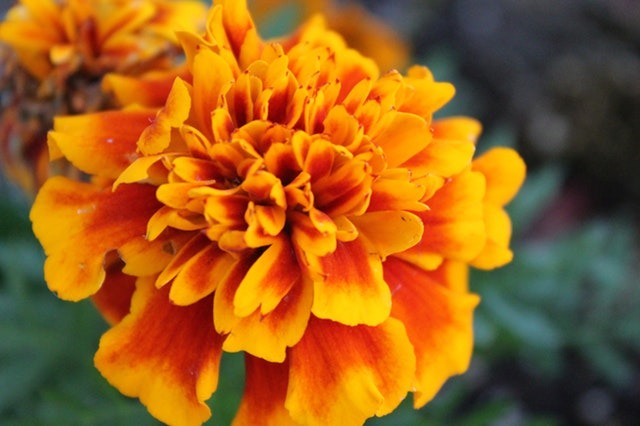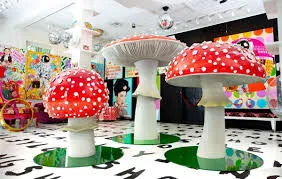Day of the Dead Flower: The Heart of a Timeless Tradition
Día de los Muertos, or the Day of the Dead, is a vibrant Mexican tradition that celebrates the lives of deceased loved ones. It’s a time to honor ancestors, share stories, and create beautiful altars known as ofrendas. While candles, sugar skulls, food offerings, and photos are all vital parts of the celebration, flowers—especially marigolds—are central to the essence and beauty of the occasion.
In this blog post, we dive deep into the meaning, symbolism, and uses of Day of the Dead flowers, focusing particularly on marigolds, while also exploring other florals that hold cultural significance during this powerful and colorful celebration.
The Importance of Flowers in Día de los Muertos
Flowers are not just ornamental in Día de los Muertos—they are deeply symbolic, believed to guide the spirits back to the world of the living. The vivid colors, fragrant scents, and spiritual associations of these blooms create an atmosphere of welcome, remembrance, and celebration.
They are used to:
- Decorate altars (ofrendas)
- Line gravesites and cemeteries
- Adorn homes, streets, and public altars
- Create garlands, crowns, and floral rugs
In essence, flowers serve as a bridge between the earthly realm and the spiritual world, helping souls find their way home for the celebration.
Marigold: The Official Day of the Dead Flower
The “Flor de Muerto” – Flower of the Dead
The most iconic flower of Día de los Muertos is the marigold, known in Spanish as “Cempasúchil” (sometimes spelled Cempazúchitl). This golden-orange bloom is often referred to as the “flower of the dead.”
Its bright color and intense aroma are said to lead the spirits back to the altars and graves of their loved ones.
Symbolism of Marigolds:
- Life and death: Their vibrant orange and yellow colors symbolize the sun, life, and rebirth.
- Guidance: The strong fragrance is believed to attract and guide souls from the afterlife.
- Resilience: Marigolds grow in tough conditions, representing the endurance of memory and spirit.
Marigolds are planted, harvested, and arranged with care as the Day of the Dead approaches, becoming the visual and emotional centerpiece of the celebration.
How Marigolds Are Used in Day of the Dead Celebrations
Marigolds are used in a variety of creative and meaningful ways throughout the Día de los Muertos festivities:
1. Ofrenda Decorations
Marigolds are placed around pictures, candles, and offerings on the altar. Some people create marigold arches or frames to encircle the altar in a halo of color.
2. Pathways for Spirits
Petals are sprinkled on the floor from the front door to the altar, forming a pathway for spirits to follow. Some families create intricate petal carpets or floral rugs with detailed designs.
3. Gravesite Arrangements
Graves are cleaned, swept, and adorned with fresh marigolds, garlands, and bouquets. Family members may spend the night at the cemetery, lighting candles and sharing memories with flowers nearby.
4. Garlands and Crowns
People wear marigold garlands or flower crowns as part of their attire, celebrating the return of ancestors with joy and honor.
Other Flowers Used During Día de los Muertos
While marigolds are the star, several other flowers also play an important role in Day of the Dead altars and decorations.
🌸 1. Baby’s Breath (Nube)
Often used to complement marigolds, baby’s breath adds a delicate touch to floral arrangements and symbolizes purity and remembrance.
🌺 2. Cockscomb (Celosia)
Known for its deep red and magenta colors, this flower represents mourning and the blood of life. Its rich texture is also visually striking.
🌼 3. White Hoary Stock
Used in combination with other blooms, these white flowers represent innocence and eternal life, especially when honoring deceased children (Angelitos).
🌻 4. Sunflowers
Sometimes used in modern Day of the Dead altars, sunflowers represent devotion and longevity and connect the ritual to the sun and cycles of life.
🌺 Creating Your Own Day of the Dead Flower Arrangements
Whether you’re participating in a community event or creating a small ofrenda at home, using flowers can elevate the spiritual and emotional impact of your altar.
Steps to Create a Floral Ofrenda:
- Choose Your Flowers:
- Primarily marigolds, with accents like baby’s breath or cockscomb.
- Prepare the Space:
- Clean the surface where the altar will be placed. Include framed photos, candles, and mementos.
- Arrange Your Blooms:
- Use vases, garlands, or handmade floral wreaths.
- Create a Path:
- Use loose marigold petals to form a trail from the door to the altar.
- Add Candles and Offerings:
- Place food, water, sugar skulls, incense, and other symbolic items.
The combination of flowers and candles creates a powerful energy of love, guidance, and celebration.
Fresh vs. Artificial Flowers: Which to Use?
While fresh marigolds are preferred for their scent and energy, not everyone has access to them—especially outside of Mexico. In such cases, artificial marigolds made from silk, crepe paper, or felt are acceptable and widely used.
Pros of Artificial Flowers:
- Long-lasting and reusable
- Easier to source globally
- Can be crafted at home with children or in workshops
However, when possible, fresh marigolds are favored for their traditional significance and spiritual symbolism.
DIY Day of the Dead Flower Crafts
If you’re hosting a Day of the Dead celebration or teaching children about the holiday, crafting marigolds can be a fun and educational activity.
Simple DIY Marigold with Crepe Paper:
- Cut orange or yellow crepe paper into strips
- Fold accordion-style and tie the center with floral wire
- Fan out each layer, fluffing to create a bloom
- Attach to a stem or use as a garland
These handmade flowers can be used to decorate altars, classrooms, party tables, or worn as accessories.
Cultural Respect and Appreciation
As the Day of the Dead gains popularity around the world, it’s important to honor and respect the cultural roots of the celebration.
- Learn about the history and meaning of the holiday
- Avoid turning sacred symbols like skulls or marigolds into costume props
- Support local artisans and Mexican flower growers if possible
- Share the significance of marigolds and other traditions with others
When done with understanding, participation can be both beautiful and respectful.
The Emotional Power of Flowers
The use of flowers in Día de los Muertos isn’t just visual—it’s deeply emotional. Flowers help express grief, love, memory, and celebration all at once. They connect generations and cultures through a shared reverence for life and legacy.
When families lay marigolds on an altar, they aren’t just decorating—they are calling home the spirits of loved ones. They are offering beauty, remembrance, and welcome with every petal placed.
Marigolds Beyond Mexico
While Día de los Muertos is uniquely Mexican, marigolds are revered across the world, particularly in spiritual or ancestral traditions.
- In India, marigolds are used in festivals like Diwali and religious rituals
- In Nepal, marigolds are part of Tihar (a festival honoring dogs, siblings, and ancestors)
- In Thailand, marigolds symbolize luck and are used in temples
- Globally, they represent resilience, memory, and reverence
This universal appeal makes marigolds a truly powerful flower—spiritually and symbolically.
Final Thoughts
The Day of the Dead flower—most notably the marigold—is far more than a decoration. It is a spiritual guide, a symbol of remembrance, and a beacon of beauty in one of the world’s most heartfelt celebrations of life and death.
Whether you’re placing fresh marigolds on a grave, crafting your own floral altar, or simply learning about this tradition, you’re participating in a ritual that honors both the past and the present.
As the saying goes:
“To live in hearts we leave behind is not to die.”
And through the fragrance and glow of marigolds, our loved ones live on.

